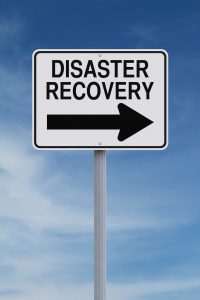Azure Workloads: Site Recovery for BCDR

What Is Azure Site Recovery?
Business outages are caused by natural events and operational failures. Organizations need a business continuity and disaster recovery (BCDR) strategy that keeps apps and data safe and available during both planned and unplanned downtime. It also needs to be able to recover those apps and data to normal working conditions as soon as possible. Azure Site Recovery meets these needs through the following avenues:
- Simple, automated protection and disaster recovery in the cloud
- Orchestrated disaster recovery as a service (DRaaS)
- Replication and disaster recovery to Azure
- Continuous health monitoring with Site Recovery
Why Site Recovery?
There are a host of reasons why Azure Site Recovery is an excellent option for BCDR, including recovery in the cloud, resiliency, testing, flexible failover, and continuous monitoring.
Disaster Recovery in the Cloud
 Replicate workloads running on VMs and physical servers to Azure, rather than to a secondary site. This eliminates the cost and complexity of maintaining a secondary data center. With Site Recovery, you have the ability to replicate any workload running on-premises, Hyper-V VMs, and Windows/Linux physical servers.
Replicate workloads running on VMs and physical servers to Azure, rather than to a secondary site. This eliminates the cost and complexity of maintaining a secondary data center. With Site Recovery, you have the ability to replicate any workload running on-premises, Hyper-V VMs, and Windows/Linux physical servers.
Resilience
Site Recovery orchestrates replication and failover, without intercepting application data. Replicated data is stored in Azure storage, with the resilience that provides. When failover occurs, Azure VMs are created based on the replicated data.
Testing Without Disruption
Azure Site Recovery allows you to easily run test failovers to support disaster recovery drills without affecting production environments.
Rich Recovery Plans with Flexible Failover and Recovery
Recovery plans allow modeling to customize failover and recovery of multi-tier applications spread over multiple VMs. Order groups within plans, and add scripts and manual actions. Recovery plans can be integrated with Azure automation runbooks. You can run planned failovers for expected outages with zero data loss, or be prepared for unplanned failovers with minimal data loss. Easily fail back to the primary site when it’s available again.
Continuous Health Monitoring
Site Recovery monitors the state of your protected instances continuously and remotely from Azure.
Interested in learning more about how Azure Site Recovery can improve (or even become) your “plan for a rainy day”? Please contact us today to learn more about this exciting solution!
Categories
Search
Blog Categories
Related Resources
Archives
- July 2024
- June 2024
- May 2024
- April 2024
- March 2024
- January 2024
- October 2023
- September 2023
- August 2023
- July 2023
- June 2023
- May 2023
- April 2023
- March 2023
- February 2023
- January 2023
- October 2022
- July 2022
- June 2022
- May 2022
- April 2022
- March 2022
- February 2022
- January 2022
- December 2021
- November 2021
- October 2021
- September 2021
- August 2021
- July 2021
- June 2021
- May 2021
- April 2021
- March 2021
- February 2021
- January 2021
- December 2020
- November 2020
- October 2020
- September 2020
- August 2020
- July 2020
- June 2020
- May 2020
- April 2020
- March 2020
- February 2020
- January 2020
- December 2019
- November 2019
- October 2019
- September 2019
- August 2019
- July 2019
- June 2019
- May 2019
- April 2019
- March 2019
- February 2019
- January 2019
- December 2018
- November 2018
- October 2018
- September 2018
- August 2018
- July 2018
- June 2018
- May 2018
- April 2018
- March 2018
- February 2018
- January 2018
- December 2017
- November 2017
- October 2017
- September 2017
- August 2017
- July 2017
- June 2017
- May 2017
- April 2017
- March 2017
- February 2017
- January 2017
- December 2016
- November 2016
- October 2016
- September 2016
- August 2016
- July 2016
- June 2016
- May 2016
- March 2016
- February 2016
- January 2016
- December 2015
- October 2015
- September 2015
- August 2015
- July 2015
- June 2015
- May 2015
- April 2015
- March 2015
- February 2015
- January 2014
- February 2013




